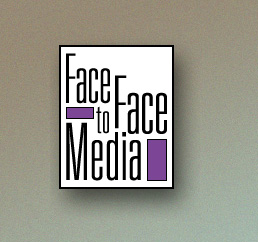
Who offers it? |
||||||||||||||||||||||||||||||||||||||||||
|
|
||||||||||||||||||||||||||||||||||||||||||
|
This course is not currently available For more information please contact Gary Marcuse marcuse@facetoface media.ca 604 251 0770
From 2011 to 2016 this course was offered by Athabasca University as CMNS 315 An overview of the courses is provided below. For full information and registration please consult the Athabasca University site.
Stay in touch If you are interested in registering, please leave your contact information with us here .
Understanding Media Literacy: Inside Plato's Cave Overview Designed for teachers, parents, and students of communication, this course in media education recognizes that, although mass media has come to dominate many aspects of our society, children have few opportunities to develop media literacy skills in formal settings. A basic assumption of the course is that media literacy helps children to an informed understanding of the nature of the mass media, its techniques, and effects. More specifically, media literacy increases their understanding and enjoyment of how the media works: how it is organized, how it produces meaning, and how it constructs reality. The course aims to provide the means by which teachers and others can foster media literacy in children so that they can critically analyze and evaluate the form and content of media, create media, communicate using media, and understand its use and purpose.
OutlineUnit 1: Introduction to Media Education
EvaluationWhen previously offered by Athabasca Univerity, the following evaluation was used: To receive credit: you must complete all assignments, achieving a minimum composite course grade of "D" (50 percent). The chart below summarizes the course assignments and the credit weight associated with each one.
Course Materials All study guide, reading and viewing materials for CMNS 315 are available on the course website.
The course was also offered as Education Studies (EDUC) 115 Understanding Media Literacy: Inside Plato's Cave Overview Designed for teachers, parents, and students of communication, this course in media education recognizes that, although mass media has come to dominate many aspects of our society, children have few opportunities to develop media literacy skills in formal settings. A basic assumption of the course is that media literacy helps children to an informed understanding of the nature of the mass media, its techniques, and effects. More specifically, media literacy increases their understanding and enjoyment of how the media works: how it is organized, how it produces meaning, and how it constructs reality. The course aims to provide the means by which teachers and others can foster media literacy in children so that they can critically analyze and evaluate the form and content of media, create media, communicate using media, and understand its use and purpose.
OutlineUnit 1: Introduction to Media Education
EvaluationTo receive credit for EDUC 115, you must complete all assignments, achieving a minimum composite course grade of "D" (50 percent). The chart below summarizes the course assignments and the credit weight associated with each one.
To learn more about assignments, please refer to Athabasca University's online Calendar.
Course MaterialsAll study guides, reading and viewing materials for EDUC 115 were included in the course materials online. last updated 3 Jan 2018
|








